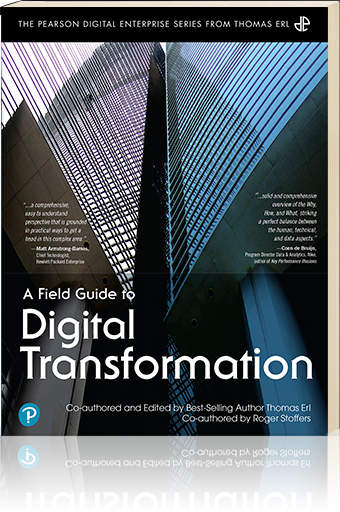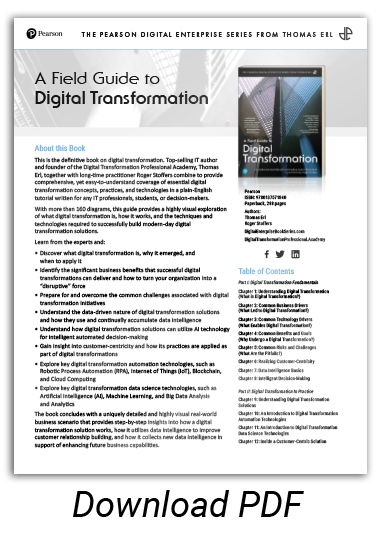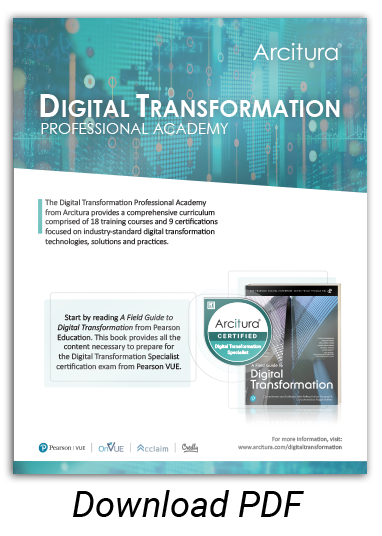About this Book
Digital transformation represents a powerful collection of contemporary business practices and technology innovations that can, when applied successfully, significantly reshape and enhance many aspects of how an organization operates and relates to the outside world. In best-selling IT author Thomas Erl’s first new book in five years, “A Field Guide to Digital Transformation” provides readers with an indispensable guide to understanding and successfully incorporating disruptive digital transformation practices and technologies within their organizations. Co-authored by Roger Stoffers, the book further provides detailed coverage of the challenges, risks and impacts of digital transformation, with insights as to how its adoption can shift organizational cultures and business directions.
Topic areas covered include:
- Clarifying, in plain English, what constitutes contemporary digital transformation
- Understanding the benefits and challenges of digital transformation adoption
- Explaining the business motivations and drivers behind digital transformation
- Identifying the primary technology drivers and innovations that make digital transformation possible
- Learning about customer-centricity and how it can reshape business automation and organizational culture
- Learning about the importance of data intelligence, including data origins, sources, collection methods, acquisition and utilization
- Understanding data-driven decision making and automated decision making
- Providing an easy-to-understand overview of each of the primary digital transformation technologies, including Cloud Computing, Blockchain, IoT, Big Data, Machine Learning, AI, RPA and others
- Comparing traditional applications to digital transformation solutions and harmonic applications
- Exploring how customer-centric business automation solutions work
- Looking at how robotic process automation and business process optimization are utilized by digital transformation solutions
- Exploring different digital transformation industry business scenarios (such as for healthcare, finance, logistics, supply chain, agriculture, etc.)
- Addressing numerous digital transformation planning and adoption considerations
Table of Contents:
Part I: Digital Transformation Fundamentals
Chapter 1: Understanding Digital Transformation (What is Digital Transformation?)
Chapter 2: Common Business Drivers (What Led to Digital Transformation?)
Chapter 3: Common Technology Drivers (What Enables Digital Transformation?)
Chapter 4: Common Benefits and Goals (Why Undergo a Digital Transformation?)
Chapter 5: Common Risks and Challenges (What Are the Pitfalls?)
Chapter 6: Realizing Customer-Centricity
Chapter 7: Data Intelligence Basics
Chapter 8: Intelligent Decision-Making
Part II: Digital Transformation In Practice
Chapter 9: Understanding Digital Transformation Solutions
Chapter 10: An Introduction to Digital Transformation Automation Technologies
Chapter 11: An Introduction to Digital Transformation Data Science Technologies
Chapter 12: Inside a Customer-Centric Solution




